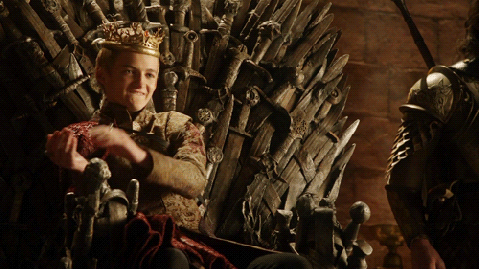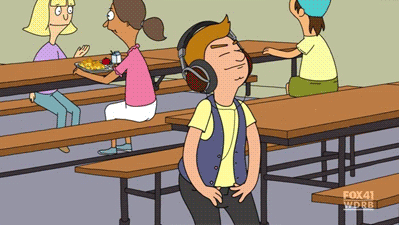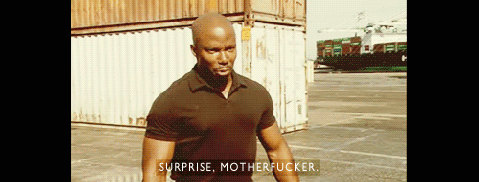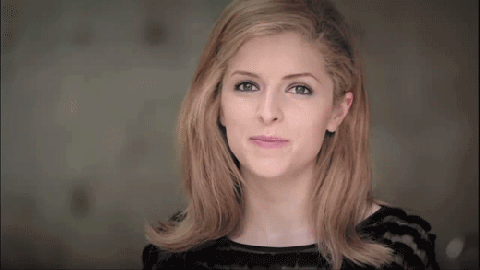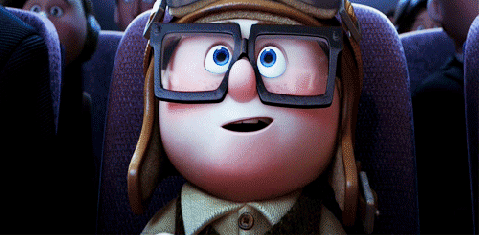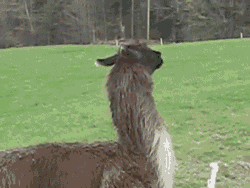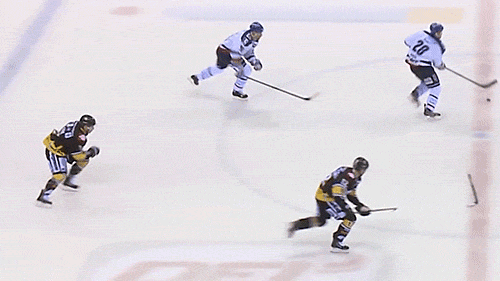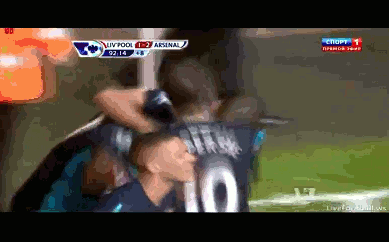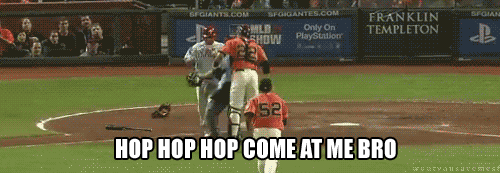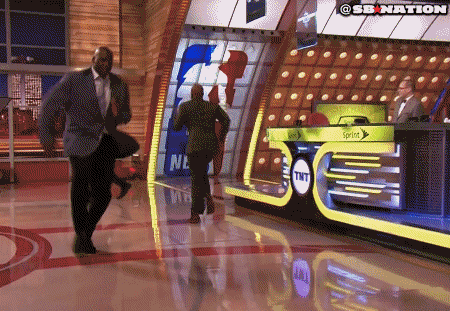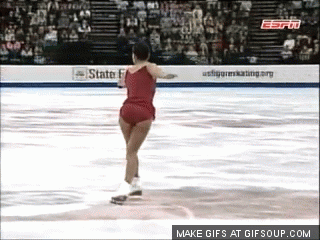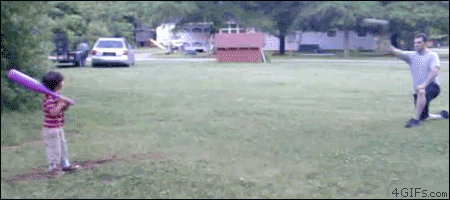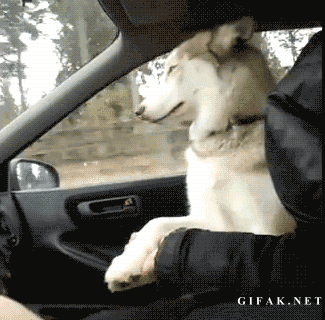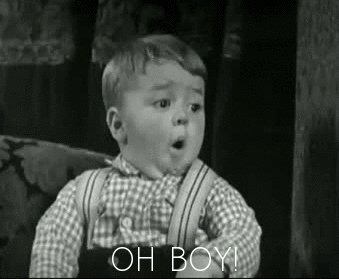On (Maybe) Being a USFSA Blogger
August 9, 2015 § Leave a comment
Maybe, just maybe. ¯\_(ツ)_/¯

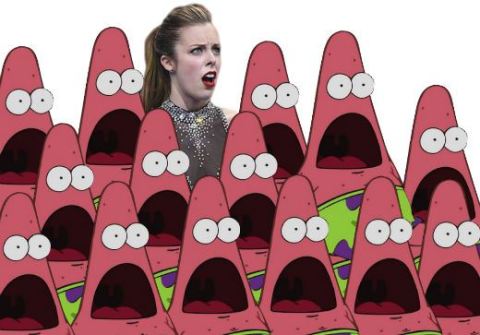
What would Brian Boitano do?
Wait, did I really just Uncle Ben myself?
On Midseason Previews: 2014-15 UCLA Bruins
December 11, 2014 § Leave a comment
The United States Figure Skating Association’s Intercollegiate regular season is one-third of the way done for Pacific Division teams. Schools from California and Colorado made their way through I-70 to Edora Pool and Ice Center (EPIC) in Fort Collins to see if they could make their Intercollegiate Nationals dreams come true. It’s University of Denver, Colorado State, and University of California, San Diego who are the closest to booking their flights to the San Francisco Bay Area for some postseason glory. Lurking within striking distance are the University of California, Berkeley and University of Colorado, Boulder. Where art thou, UCLA and DO WE START FREAKING OUT RIGHT NOW?
UCLA Bruins
Season Standings: Tied for 6th place with Colorado College and University of Northern Colorado, with 0 points
The real figure skaters of Westwood come back home from Denver empty-handed, edged out by pioneers, bears, rams, buffaloes and sea deities. They do get credit for sending skaters to EPIC so they don’t get a stern talking to from Katherine Specht and the USFS Collegiate Committee.
The Bruins are stoked not only to come back to final examinations and $1.75 Diddy Riese ice cream sandwiches, but also to the low altitude of Southern California, where it reportedly makes a difference to breathe and skate at 500 feet above sea level, instead of 5000 feet.
These may not be your older brother’s Bruins though, as the Core 4 of Joey Millet, Maddison Bullock, Mericien Venzon, and Emily Chan, plus junior college transfer Amanda Sunyoto and team mom Coral Chou sort out their post-undergraduate lives. Best of luck to their skating, their modeling and singing, their graduate school, their life endeavors. Let’s take a look at the new Core 4 or Core … 10.
2014-15 Roster
- Tyler Vollmer, ice dance
- Adrian Siew, free skate
- Evan Bender, free skate
- Ai Ohno, free skate
- Sarah Palaich, ice dance and free skate
- Jillian Campbell, free skate
- Evy Karin, free skate
- Therese Vesagas, free skate
- Julia Feng, free skate
- Patricia McNeil, free skate
- Marisa Goff, ice dance
- More members to follow once the competitions in San Diego and Denver roll around
Sunyoto Sibling Rivalry No More
Raise your beverage in remembrance of Amanda and her younger sibling, Cal’s Sean Sunyoto. This will be the first time since Amanda transferred from Cerritos College that the Sunyotos won’t be ice dancing against each other. Rather than arguments or fights though, you instead saw one trying to teach the other how to do certain ice dances five minutes before they were scheduled to compete, you saw them supporting each other on and off the ice, and you saw them symbolizing the connection made between Berkeley and LA’s figure skating teams. As Sean finishes his last year of undergraduate eligibility, the siblings will turn their sights toward starting dental school, telling people to floss, and beyond.
X-Factor
There’s Tyler Vollmer, who can ice dance pretty darn well and take advantage of the bonus points that come with competing at the international dance events. It could be Sarah Palaich, whose versatility in the novice free skate and her ice dancing can earn the team much needed points.
I’m still leaning towards sophomore Ai Ohno as the one who wills the team to the postseason. Skating up from novice to junior this year, the team will rely on her clean skates to keep up with everyone else.
California Love
Deadline for Pacific Division teams to sign up for the January 24th Ride the Tide Competition, hosted by University of California, San Diego is December 17th. It’s a three hour drive or a half-hour flight from LA to San Diego, so the Bruins will be skating not too far from home, which is nice. If UCLA can place in the top 3 in January’s competition, they won’t have to worry about not making Nationals.
thefigureskatinglawyer
On the Triple Axel
May 2, 2014 § Leave a comment
Hardcore and casual figure skating fans know much more figure skating knowledge than they realize. They know there’s a whole bunch of jumps, many ways to spin (upright, sitting, leaning back), and that the magical footwork sequences that Charlie and Meryl, et al pull out of thin air shouldn’t be recreated at home. That said, it’s time to deconstruct and explain one of the most mystical technical elements that a figure skater can do: a triple axel.
As well-known as the Iron Lotus and Chazz Michael Michaels’ interpretive dancing, the triple axel is in everyone’s figure skating lexicon (much easier to say; most don’t want their bae to catch them slipping while dropping “salchow”, “camel”, “twizzles” in normal conversation). However, would we be able to identify a triple axel?
Bro, Do You Even Single Axel Tho?
Considered a single jump, the single axel contains 1.5 revolutions, requiring a skater to go around all 540 degrees. If landed correctly in competition using ISJ scoring, the jump is worth 1.1 points. At the lower levels, this jump alone ends up separating those who skate all the way through high school from those who quit much earlier. This jump ends up being the gateway towards achieving doubles and eventually triples.
Here’s a cool video on what a single axel looks like.

“I just want to see triple axels, not read what it’s about!!1!!” Might want to skip ahead to “What about triple axels?”
You’ll recognize when most skaters are attempting an axel jump when they first prepare for the jump, starting at 0:10 of the video until 0:20. Her weight is over her right leg, her trajectory going counter-clockwise because she’s on her back outside edge (her weight is specifically over her right leg, over the right side of her right foot).
The Takeoff (Gliding, 0:24-0:29)
The skater then plants her left skate onto the ice, also bringing her arms back. She’ll pass the right leg through along with the arms and launch herself up facing forward without any excess swinging motion.
The Jump and the Landing (Pivot and Landing, 0:33-0:47)
After launching herself forward and doing the prerequisite 180 degree turn, she still needs to finish off one more revolution before her jump is considered an axel by the judges. The skater finishes off her jump by coordinating her arms and feet simultaneously. Her arms are passing forward and gather while the left leg crosses over the right leg, all to conserve angular momentum and quickly rotate before landing the jump.

Thanks, Channing.
No excess movements, an equal balance of weight. Any slight tilt in her air position would send her off-balance, making it harder to land the jump and earn a lot of points.
What about Triple Axels?
A triple axel landed correctly is worth 8.5 points and contains 3.5 revolutions. It no longer is the highest scoring jump in competition but it’s still required by all male skaters at the international level. Because it isn’t required of them to include triple axels in theirs, only one female skater routinely puts it in her competition programs. What does a triple axel look like?
Same gliding into the take-off and a badass landing to finish, just 720 more degrees to get around to count it as a triple. As for the revolutions, the skater completes one revolution on their way up, one revolution at the apex of the flight, and one final revolution on the way down before the landing.
Here’s Mao Asada of Japan, taking care of business with this triple axel.
***
That’s the triple axel, figure skating lexicon that you won’t be embarrassed to say because you know what’s behind it now. It’s no quad jump but it’s still the bees knees amongst figure skating fans, casual and veteran fans alike. Now you too can understand more about what Scott Hamilton and Sandra Bezic (nobodylikesSandraBezic) Johnny Weir, Tara Lipinski and Terry Gannon are saying.
thefigureskatinglawyer
On Paralegal Certificate Candidacy
April 20, 2014 § 1 Comment
Happy Easter, whether you hunted some eggs, imbibed some tasty draaaaaaaaanks, or potatoed your way through a fair-weather Sunday.
On another note, it’s weird to use the moniker “thefigureskatinglawyer” when I don’t even English well, let alone have the requisite qualifications to be a lawyer. What’s up with that? About a year and a half of self-reflection, I have decided to forgo the law school route for now and get my paralegal certificate at San Francisco State University.
Weird Undergraduate-Graduate School Limbo
Woah, as a full-time student at SF State, I could theoretically check in with Katie Specht and the USFSA Collegiate Committee and set up a team here.
Looking for other figure skating, aspiring paralegals and optional objectives aside, SFSU Paralegal Studies Program is the only American Bar Association-certified program in San Francisco and one of the few certified programs in the Bay Area. It’s a program available to undergrad students looking for additional skills, working professionals looking at a possible career change, and individuals who want a cheaper method of previewing the first year of law school.
At about $825 for a three-unit course, the tuition, books, LexisNexis student subscriptions run a prospective student about 9000 to 10000 dollars to finish the 10 classes (5 required, 5 elective). It’s the student’s option to run roughshod through this program in 12 to 18 months, take the 4-year scenic route through things, or something in between. All that to gain the relevant skills of a paralegal, have the option to do internships through the school, and decide if the law school route seems attractive at that point. That seems like a solid way to save $30,000-$40,000 in law school tuition/room & board (a conservative guess on a first year’s cost) to figure out whether law school is the next time and financial investment to make.
The curriculum allows aspiring legal professionals to gain skills that they would learn and hone in their first year of law school. Performing legal research and Shepardizing cases? Drafting legal memoranda? Ethical conduct? Assisting in the prep of cases for trial? Learn about different types of software used in law firms? That’s pretty relevant to aspiring legal professionals, I suppose.
Who Can Take Their Classes
- Create an SFSU ID (linky link here) if you’ve never enrolled at SFSU before.
- Read up here to figure out how to get your password.
- Fill out this form, have a check for $50 written out to SFSU-CEL and submit it along with a college transcript
You’ve done all that? Cool, you get to do early registration and swoop on classes before they fill up on a first-come, first serve basis.
What if you’re not a part of the paralegal program and you kinda want to keep the $50 in your pocket? You can still sign up to take the classes? No way!
Fall and spring semesters have additional sections of the required classes, allowing students to fit their classes around their other class schedule or their work schedule. Maybe your day allows for you to go to class from 2:00 pm to 4:45 pm. If not, maybe you can go to class from 6:00 pm to 9:45 pm. Summer classes don’t have that luxury of having extra sections but they do have interesting electives. Summer classes do have a shorter 10 week (and one Saturday!) schedule to go over 17 weeks of material so … meh. However, yay to getting ahead in the program!
Internships
At the very least, having a paralegal certificate from an ABA-certified program gives you an advantage over college graduates looking for the same job. After meeting with program director Pat Medina and going through a few interviews with prospective internship supervisors, you can gain valuable experience that would’ve been tough to get otherwise.
Through professional relationships Pat Medina has cultivated at these public and private organizations, the students have a chance to end the no job because of experience/no experience because no job Catch-22 we’ve all grown to love. The organizations get to teach some of these students how to paralegal and maybe convince them that they can get a job there. Yay!
***
My classmates from college are going on to do some big, money-making things. Some are investment bankers. Some are figuring out this whole top-14 law school thing and passing bars, state, patent, etc. Some are going to be the finest dentists and doctors in the San Francisco Bay Area (In looks or skills? We’ll let Yelp, Tumblr, BuzzFeed decide on that one). Some are going to be champion figure skaters who coach other champion figure skaters on the side. Some are going to be wonderful parents. Some will have a really hard time figuring out what to do with a lot of money.
Instead of being in a rush to beat others to [random accomplishment], I’m beginning to understand that my peers and I will reach our career and life destinations at different points of our lives. That said, whether or not it takes me 12 months or 4 years, I’m going to finish this rad program and become a certified, bona fide paralegal. I still have no idea which field of law I’m interested in or whether I’ll even stay in law. I haven’t completely shut the door on going to law school either. I still feel like I’ve taken a step in the right direction.
Would it be more appropriate to call myself “thefigureskatinglegalprofessional” as opposed to “thefigureskatinglawyer?” Maybe, but that seems like a cumbersome mouthful. Also, TWSS.
thefigureskatinglawyerlegalprofessionallawyer
On Adrian Bulldogs Figure Skating
April 11, 2014 § 1 Comment
It’s the 2014 US Figure Skating Intercollegiate Nationals and every team has arrived in Adrian, MI, getting all Blades of Glory for University of Delaware’s crown.
While eight teams decompress at the local Holiday Inn Express and enjoy the typical fare of a Michigander, it is Adrian College who get to enjoy the comforts of their own beds, home cooking, and possibly home-ice advantage. That plays a role in the reason why the Adrian Bulldogs have the best shot from the Midwestern Conference to finish in the top 3.
Adrian Bulldogs
One doesn’t simply walk onto the podium… right?
It’s a disclaimer I drop on any team not named Dartmouth, Delaware or Boston University but we are talking about one of the best Midwest teams of all-time, ALL-TIME. Led by team captain Tricia DeFelice and last year’s US intercollegiate intermediate ladies champion Demi Russo, these skaters are on fire.
- 1st in Bronco Challenge Cup
- 1st in Maize and Blue Matchup
- 1st in Skate on Wisconsin
Adrian College has been taking care of business in the Midwest, manhandling any challenges to their regional throne. Dating back to the 2012-2013 season, the team has won the last 5 Midwestern regional competitions, clinching back-to-back Midwestern championships for the first time in school history.
Coached by Ashley Carlson, these student-athletes will represent the Bulldogs in the team’s second consecutive time on the National stage:
- Co-captain and senior ice dancer Tricia DeFelice
- Junior ladies India Johnson
- Novice ladies Meghan Barnes
- Intermediate ladies Demi Russo
- Juvenile ladies Raynise Mancha
- Pre-juvenile ladies Barbara Hipp
- Preliminary ladies Maddie Sena
The additional two points for top-5 finishes in Johnson’s junior championship freeskate and DeFelice’s international ice dance events will certainly help Adrian in the standings.
WITH OUR POWERS COMBINED
The team has enough personnel to field a group for Low Team Maneuvers and another for Intermediate Team Maneuvers. Those two groups will get all Power Rangers-y and present their case on why their jumps, spins and footwork sequences bring all the figure skating judges to the yard.
GIVE YOUR HEART A BREAK
Just kidding, Demi Russo’s not sending any mixed messages here, nor does she plan on letting anybody else get first place in the intermediate ladies events. Intermediate ladies from other teams, prepare to get your hopes dashed and hearts broken. Also, decide in a reasonable fashion who gets 2nd, 3rd, 4th, and 5th.
HOME SWEET HOME
Adrian College has no flights to make, classes to miss, hotel stays to book, home-cooked dining commons meals to miss.
By virtue of hosting this major event, the Bulldogs have the aforementioned luxuries, as well as not having to get used to another time zone. Adrian, MI also sits 787 feet above sea level, so no complaints of lacking oxygen there.
***
Skaters from all teams have scheduled practice times Friday night and Saturday morning to get in their final runthroughs and tweaks. They will then have to put their game faces on and skate their best.
Television Coverage: IceNetwork, MLB Advanced Media and NBC will car- oh, there’s no way to watch this thing live outside of Arrington Ice Arena.
Social Media Coverage: You might get the occasional tweet about the standings from @USFigureSkating on twitter. Instead, you might get more in-depth coverage from each team’s Facebook pages and twitter accounts.
Start Time: 6:45am Central Standard Time
End Time: Award ceremonies around 3:00pm CST
To UC Berkeley, UCLA, University of Denver, Dartmouth, Boston University, Delaware, Michigan, Miami (OH), and Adrian College, the Lannis- whoops, thefigureskatinglawyer sends his regards.
thefigureskatinglawyer
On UCLA and Cal at Nationals
April 8, 2014 § Leave a comment
Sorry, totally failed on imparting any figure skating wisdom before and during the Olympics. Let’s do a quick rundown for two of the colleges representing the West Coast (best coast) at this year’s US Figure Skating Intercollegiate Nationals in Adrian, Michigan.
UC Los Angeles
- 3rd place at Tiger Challenge
- 3rd place at Golden Bear Skate
- 3rd place at Pioneer Open
UCLA, 2nd runner-up in the Pacific Region makes its second straight appearance at Intercollegiate Nationals, this year at the expense of a small but scrappy UC San Diego Skating club team. Too many Universities of California, far too few spots. Next time, UC San Diego. *patpat*
Who Leads The Team
thefigureskatinglawyer wishes Godspeed to Mericien Venzon and Emily Marie Chan, both big reasons why UCLA Figure Skating exists at Westwood and why UCLA has made its presence known on the national stage. That said, it’s up to Colorado native Maddison Bullock and Spokane, WA skater Joey Millet to lead the team to success.
Supporting those core leaders in the freeskate and dance events are senior Amanda Sunyoto, junior skater and SF Bay Area kid Evan Bender, and newcomer Ai Ohno. Good luck as well to Adrian Siew, Jillian Campbell, Therese Vesagas and Sarah Palaich and shoutout to team mom, Coral Chou.
#sunYOLO
Hey, speaking of Amanda Sunyoto, this is probably the last intercollegiate competition of her career before she graduates. It’s also the last chance to establish superiority over her kid brother, Sean Sunyoto, who may end his undergraduate skating career early to focus on his pre-dental studies. Who’s winning in the lifelong sibling rivalry? Well, that’s a tough one. Moving on before I get in trouble.
ohno, nononoYES
It’s pretty well-known that Joey Millet and Evan Bender will get UCLA their points in the junior men’s events, as well as play big parts in the high team maneuvers. Maddison Bullock will go ahead and give it her best at the senior freeskate but also on her dance events. Not sure where you’ll find Amanda Sunyoto during the competition? Look for her competing in the senior championship and senior dance events.
The X-factor you should keep your eye out for is freshman and novice skater Ai Ohno. She faces stiff competition from the East Region teams, including Dartmouth freshman and novice skater Maddy Thornton, but if her regional performances are indication of anything, it’s that Ohno’s clean skates (no falls, all top-2 finishes) will put tremendous pressure on the rest of field.
***
UCLA flies out of LAX and get into DTW Friday night. The Bruins have all weekend to drop the powder blue smackdown on its competition.
UC Berkeley
- 5th place at Tiger Challenge
- 1st place at Golden Bear Skate
- 2nd place at Pioneer Open
Cal, first runner-up in the Pacific Region makes their annual trip to Intercollegiate Nationals. Yay, Golden Bears.
Who Leads The Team
The Golden Bears had to scramble after Laney Diggs and Teressa Vellrath retired from intercollegiate skating. The team is also without ice dancers Kelsey Chan (not enough competitions) and Samira Damavandi (studying abroad in the UK). thefigureskatinglawyer sends his regards to Song King, Annaleigh Yahata, Jay Yostanto, Gina DeNatale and Katrina Phan. Seriously though, the team will be without Diggs and Vellrath, who earned a significant amount of points for Cal last year at Nationals.
Team captain Janelle Unger and team president Michelle Hong take on the task of replacing Laney Diggs and Teressa Vellrath. Sara Billman, Sravani Kondapavulur, Amy Nguyen, Kirsten Flores, Audrey Tan, Audrey Phone-Chen, Matej Silecky, Aditya Nandy and Sean Sunyoto will assist Janelle and Michelle in figuring out how to improve on last year’s 4th place finish. Bless the hosts for providing Matej, Aditya and Sean their own locker room. God forbid they ruin the sanctity of figure skating should anybody see them changing.
New Leaders
UC Berkeley loses Katrina Phan, Michelle Hong, Sravani Kondapavulur, Janelle Unger and Sean Sunyoto to graduation next year. The team still has two cornerstone pieces to build around and keep Cal relevant for the rest of this decade. That said, US junior champion Matej Silecky and senior ladies Sara Billman will take on the bulk of the leadership during the rest of their time at Cal. Their broad network of skating friends and their strong presence at team competitions and events will make Cal known to Sara and Matej’s respective hometowns of Palo Alto/Silicon Valley and Verona, NJ. Yay, baby Golden Bears!
New Head Coach
Head coach Dani Schraner is taking care of business in San Antonio, TX so the team added alumna Marissa Minovitz to the coaching staff.
***
Cal Figure Skating leaves the Bay Area from SFO/OAK Friday morning and arrives in DTW Friday afternoon. Have fun, everybody.
thefigureskatinglawyer
On 2014 Golden Bear Skate
January 28, 2014 § Leave a comment
tl;dr: Berkeley won, Denver can book their tickets to Michigan, and 3 UCs are fighting for 2 championship spots. Oh my.
The Nitty-Gritty
- Colorado College, Colorado State University, UC Irvine, and Northern Colorado are eliminated from contention. Thanks for skating but they have no shot at competing in Adrian, Michigan at the end of the year.
- UC Irvine and UC San Diego have college figure skating teams? Whattttttttttttttttttttttttttt?
- Natalie McLain, Ruhan Yan, Jennifer Alfred, and Ellen Wilson put UC San Diego Figure Skating on their backs though.
- The Sunyotos send their regards to all dance competitors.
- Karen Yamasaki overcame bronchitis to do her thing in the preliminary ladies event. Lauren Montgomery came back from Scotland and did her short program. These two mainstays will help junior ladies skater Sophie Fritz and preliminary ladies skater Ana Sorenson lead the Denver Pioneers and overcome the transfer of Rylie Pepich.
- Janelle Unger overcame a difficult week off the ice to take home two second-place finishes in her novice events. IN YO FACE!
- Cal skaters who you won’t see in Adrian, Michigan: Jay Yostanto, Benjamin Yeh, Annalise Mahoney, Gina DeNatale, Katrina Phan, Kelsey Chan, and Samira Damavandi.
Passing of the Torch
- UC Berkeley hosted its competition with its best ladies skater, Laney Diggs and its best ice dancer, Teressa Vellrath.
- UC Los Angeles skated on without their top junior and senior skaters, Emily Chan and Mericien Venzon.
Because all four skaters have missed the both Tiger Challenge and Golden Bear Skate, they will not be able to skate at Intercollegiate Nationals. These four 4th year skaters have one more chance at the Pioneer Open in Denver, Colorado to clinch Intercollegiate Nationals berths and tie up their intercollegiate skating careers. Best of luck to these ladies on their studies of their final semester.
So who do the four ladies seamlessly pass the torch to?
UC Los Angeles
Pre-existing core: Joey Millet, Evan Bender, Sarah Palaich, Colorado native Maddison Bullock, and Amanda Sunyoto
Alumna/team supporter: Coral Chou
Newcomers:
- Jillian Campbell
- Evelyn Karin
- Carol Lin
- Tyler Vollmer
- Adrian Siew
- Ai Ohno
- Elizabeth Miller
- Sarah Stegman-Wise
- Sara Villalon
- Collette Del Poso
- Rachelle Santos
- Amanda Smith
- Ashley Pournamdari
- Courtney Cruz
UC Berkeley
Pre-existing core: Sean Sunyoto, Matej Silecky, President Michelle Hong, Team Captain Janelle Unger, Kelsey Chan, Amy Nguyen and Sravani Kondapavulur.
Alumnae/coaches: Marissa Minovitz, Dani Schraner
Newcomers:
- Aditya Nandy
- Kathleen Albert
- Sara Billman
- Audrey Phone-Chen
- Audrey Tan
- Kirsten Flores
- Claudia Nguyen
- Maryssa Ziegler
- Elizabeth Zeng
- Anneliese Tung
Most of the newcomers for both UC Los Angeles and UC Berkeley have skated for a long time but the nerves are still there. The last thing you want to do is to tell them “Have fun!” just before the longest 2 to 4 minutes of their lives. In the meantime…
Results
- Cal
- Denver
- UC Los Angeles
- UC San Diego
- Colorado State University
- Menlo College/Colorado College
By virtue of their 2nd place finish in Oakland and their 1st place finish in Colorado Springs, Denver has 9 points. It’s mathematically impossible for them to host a competition at Joy Burns Arena, bring their entire team and somehow not make Intercollegiate Nationals in Adrian, Michigan.
Because Cal placed 1st, UC Los Angeles missed 2nd by 0.5 points, and UC San Diego placed 4th, we have three Universities of California with 6 points. Well, shit. If Denver has one championship spot locked up, that leaves two spots for three Universities of California.
My guess for the Pioneer Open? Denver wins while UC Berkeley and UC Los Angeles take UC San Diego’s lunch money and the remaining championship spots. I may have spoiled much of the 2014 Pioneer Open in Denver for you, but it doesn’t mean the last Pacific regional of the year is any less exciting.
thefigureskatinglawyer
On Pacific Coast Sectionals
November 30, 2013 § Leave a comment
Sitting in refrigerator-like conditions for 7 hours will change a man. Primarily, it just makes him wish he brought a pair of gloves, a heavier-duty jacket, and a blanket to make the cold a little more tolerable.
Anyway, I caught the last 7 hours of the 2014 Pacific Coast Sectionals at Oakland Ice, where the top 4 placing skaters in each event secure trips to Boston for the 2014 US Figure Skating Championships. The junior and senior pairs, the junior and senior men, and the junior and senior ladies finish up their chance to show why they should move on. Here are the results page for the 2014 Pacific Coast Sectionals.
***
Depending on how many competitors are in the event, there can be up to four to five skaters on the ice for 5 minute warm-ups at a time. The first couple of things I notice from these higher-level skaters during their group warm-ups are their ice awareness and self-confidence.
Ice Awareness
Each of these skaters who have made it this far in the qualifying stages have been skating for a very long time. They don’t need to rely on their sight to know where their arms and legs are. Instead, these athletes rely on muscle memory and the feel of how they’ve practiced their jumps, spins and footwork to successfully complete their routines.
It isn’t as if the skaters are ignoring what they see completely. They just won’t keep their gaze affixed on the ice beneath them. Nope, nothing interesting down there. Instead, they will set their eyes on where they will skate next to anticipate where other competitors are going.
Speaking of where competitors are going, these skaters are fearless. They will each practice their portions of their routine, coming within a yard of each other at certain areas of the ice. These close encounters would freak out a new skater who isn’t used to such a welcoming.
These junior and senior skaters will give physical body cues that tell other skaters when a jump or spin will occur. Competitors will defer space to those jumping and spinning before navigating around them and getting ready for jumps/spins of their own. They have great spatial awareness, honed by practicing on crowded sessions at home, that allow everyone to avoid collisions and injuries altogether.
Self-Confidence
If the same skaters you see during warm-ups are feeling the nerves and the gravity of the stakes at hand, you can’t immediately tell.
At this level of skating where everyone has the same jumps, it comes down to the mental side of things to determine who lands those jumps flawlessly. When triples are necessary to get the highest possible scores, now isn’t the time to waver over whether or not you can land the jump.
“Regardless of whether everything is perfect before the jump takeoff, I will land this f___ing jump” dominates the mental thoughts. It’s what ensures that the muscle memory repeats every little detail that the skater practiced in the training sessions. The crowd cheers on successfully landed jumps, whether the skaters landed perfectly or salvaged things from going wrong. They groan when skaters just miss making all 1080 degrees of rotation.
***
In 7th place after the short program with 45.43 points due to a fall on a triple flip, Laney Diggs was within striking distance of making top 4 in the standings. In a ladies long program marred by falls and aborted jumps, Diggs stood tall.
Skating 5th out of 14 skaters, Diggs dug deep and produced a beautiful performance, relying on a cleaner skate than populating her performance full of triples. She successfully lands the triple flip this time, mixing in two more triple salchows (one not rotated all the way) and two double axel-double toe loop combinations.
A sixth trip to the national championships, this time in Boston sadly wasn’t meant to be. Vanessa Lam, Rachael Flatt, Leah Keiser and Caroline Zhang maintained their leads over Diggs in the short program, leaving her in 5th place and first-alternate in case anything should prevent Lam, Flatt, Keiser or Zhang from competing at Nationals.
Should she decide not to compete with UC Berkeley’s intercollegiate team this year and not continue with skating after this year, it’s a bittersweet ending to the season and career for Laney Diggs. Sure, it would have been great to see her get to Boston but if you have watched her skate as a teammate or a fan, her performances have been a treat to watch. I wish nothing but the best for her heading into her final year of college.
thefigureskatinglawyer
On Expanding Figure Skating’s Fan Base
November 28, 2013 § Leave a comment
The sport of figure skating does a terrible job at trying to expand its fan base. Before we try to fix that, let’s see why it’s hard for the average fan to be drawn into figure skating.
Jargon – Sports Vocabulary
- Basketball has free throws, two-point shots, and three-point shots. The sport has five positions: (1) point guard, (2) shooting guard, (3) small forward, (4) power forward, and (5) center.
- Baseball has runs or points. They successfully get those runs by taking a walk, hitting a single, double, triple or home run. There are 9 fielding positions where the players try to stop the opposition from scoring points in the game: (1) pitcher, (2) catcher, (3) first baseman, (4) second baseman, (5) third baseman, (6) shortstop, (7) left fielder, (8) center fielder, and (9) right fielder. An additional position, the designated hitter makes only offensive contributions for their team.
- Hockey? The bladed brethren of figure skaters score “goals”. They have six positions: center, left wing, right wing, left defenseman, right defenseman, goalkeeper.
What do figure skaters do, besides landing all 4.5 revolutions in a triple axel?
…
What, they do more than just triple axels?
Axels are just one of many jumps and many things skaters can and must do in competition:
Jumps like the salchow, the toe loop, the loop, the flip (no, not a somersault), the lutz, and the famed axel. Here’s a slow motion video of two skaters doing all single jumps.
Spins like the layback (where you lean back), the camel (one leg parallel to the ice, one perpendicular), and the sit spin (where you sit). Competitions at the highest level also require skaters to be able to spin in the same direction on EITHER foot, doing back spin variations of the layback, camel, and sit. Here is a video of a girl who spins counter-clockwise on her left side, changing the feet twice between the second and third variation of the spin and between the third and last variation.
As for footwork that doesn’t include any jumps or spins, it incorporates “moves in the field” instead. They incorporate things like 3 turns, bracket turns, choctaw turns, counter turns, crossovers, mohawk turns, rocker turns, and twizzles.
When everything from the jumps, spins and footwork are combined with difficult transitions, then what you have is an aesthetically-pleasing performance on par with a basketball player balletically taking it to the hoop, a baseball player patrolling the field on defense, and a hockey player controlling the puck and getting ready to score a goal.
Post-Michelle Kwan Era
When I mention some of the biggest names in sports like LeBron James, Mariano Rivera and Sidney Crosby, they elicit at the very least a “Hey! I’ve heard of that name before” response. To fans who have been following these athletes’ for the duration of their professional careers, there’s a fiery love/hate relationship with no room in between.
These elite athletes communicate through their skills, knowing whatever the opponent does, they cannot stop the elite athletes from dominating. It’s through those same skills that inspire fans around the world to see their athletes on and off their arenas. These elite athletes make it seem like anything is possible.
Who can do that as an American figure skater?
There’s been a noticeable power void that Michelle Kwan left when she finished her final international competition in 2005. The 9-time national champion, who couldn’t quite put it together at the Olympics still left a lasting impression on the imagination of every fan. With her successful triple jumps and gracefulness during her signature spiral sequence, Kwan led the way for the American ladies well into the 2000s.
The American team currently doesn’t have a female skater that can confidently dominate the rest of the field like Michelle Kwan once did but Ashley Wagner will certainly do her best. Lurking behind Wagner are Gracie Gold and Mirai Nagasu. On the men’s side, you have defending Olympic champion Evan Lysacek, though the world worries that he’ll return from injury at full strength to defend his title. If he cannot skate in the Olympics, the skaters who have looked good after this year’s international competitions are Jason Brown and Adam Rippon.
The skaters to also keep note of are Charlie White and Meryl Davis. Skating together since they were 10 years old, they are currently the top-ranked American ice dancers and 2nd ranked team in the world. If anyone is capable of setting the bar high for a discipline of figure skating, overcome their Canadian archnemeses Tessa Virtue and Scott Moir, and dominate the rest of the field, it’ll be White and Davis. Keep an eye out for them in February.
Competition Schedule
For a sport where skaters train daily (sometimes fit in school between morning and afternoon workouts) and pick about 3-4 competitions to skate in, figure skating competitions happen fairly regularly. The season goes from September to March, from qualifiers to World Championships and the Olympics if it’s an Olympic year.
If you have made your country’s figure skating team, then your qualifiers will take you from Skate America in the US, Skate Canada in … Canada, and Cup of China in Beijing to the NHK Trophy in Tokyo, Trophee Eric Bompard in Paris, and Rostelecom Cup in Moscow. If you are relatively unknown in the US, then you go through regional qualifiers in the Pacific, Midwest or Eastern regionals, national semifinals, then have your breakout moment on the national stage.
Attending these competitions or watching them on TV isn’t as easy as catching Sunday Night Football on NBC or the NBA Finals on ABC. NBC covers some important figure skating competitions but if you don’t live in Europe and get the EuroSports Live channel, you must rely on an annual subscription to IceNetwork/MLB Advanced Media to keep updated with your favorite skaters.
However, if you don’t mind watching things after they happen, people post clips of skaters’ performances on YouTube so you don’t have to pay the 50 dollar fee for IceNetwork or much more to attend the competitions in person. It’s just a matter of checking to see if your favorite skater(s) participated in a competition or not.
***
It’s a steep learning curve for you and I in order to fully enjoy figure skating but I think we can make this work. We’ll collaborate with Kenny Loggins and navigate our way out of the danger zone. Hold my hand.
thefigureskatinglawyer
P.S.: What the hell is a triple flip?
On Olympic Figure Skating: A Preview
November 19, 2013 § 2 Comments
Repeat after me: “In 70+ days, I will understand singles figure skating.”
Both you and I wish we could be American broadcasters Dick Button and Scott Hamilton, equipped with a psychic power to know what jump, spin or footwork a skater just did and will do. If you have been involved in figure skating as an athlete, an official or a parent, then you have been immersed in the figure skating game for years.
However, if you are in the majority who skate once a year and watch skating competitions even less, then it doesn’t help at the moment to identify a triple axel and not explain why. Your figure skating hero completes a triple axel and the duo of Dick and Scott assist you in identifying that it’s a triple axel. It’s a noble, admirable gesture of the American commentators but really, you politely clap for a jump well done or you let out a sigh of frustration for a jump gone wrong.
Let me assist you in learning the important knowledge necessary to fully enjoy Olympic figure skating.
Knowing the Rules
Two events determine which of the 40+ elite skaters from around the world receive gold medals and bragging rights as Olympic champions for 4 years: the short program and long program. How long do the skaters have to fit in all the required elements, maximize the points they earn from each element, and mesmerize their fans watching around the world?
- Senior ladies’ and men’s short program: 2 minutes and 50 seconds max
- Senior ladies’ long program: 4 minutes (+/- 10 seconds)
- Senior men’s long program: 4 minutes and 30 seconds (+/- 10 seconds)
Each link below details the requirements for both the senior short and long programs.
If a skater does more jumps or spins than allowed or you repeat a specific element (jump, spin, footwork) already done, the judges will not give them points for the excess effort. The skater also wastes precious time and energy that could be used to highlight other aspects of the performance. If the skater skates after their music ends and goes past the time allotment, judges will subtract points and possibly ruin a competitor’s chance at Olympic glory.
Knowing the Routines And What’s Coming Next
No, no, it’s not a psychic sense or a photographic memory that allow TV broadcasters to know what comes next. For skaters who attempt to qualify for their country’s national championships and international competitions, they must submit Planned Program Content Sheets (PPCS) before the qualifying competitions occur.
Linked just above is an explanation of how to fill a PPCS out, while understanding a judge’s score sheet (example: NHK Trophy Men’s LP scores). The sheet of paper with all the planned elements allow judges to have an idea of what the performance will be like so they don’t miss a jump, spin or footwork.
Broadcasters of TV stations will also receive a copy of the PPCS, knowing when a skater improvises their routine by changing a jump combination to just an individual jump or the order of the jumps around.
As for the order of jumps, spins, footwork and transitions, choreographers will tailor the beginning and middle parts of the program to the selected music, as well as the abilities of their skaters. You may see more jumps in the second half of performances. Skaters will automatically earn a 10% point bonus for the increased difficulty of attempting jumps when tired. Most skaters will constantly end their performances with a spin, which allows them to gracefully end up in their finish position.
Prior to the 2014 Olympics, elite skaters already had opportunities at international-level competitions to showcase what they will do in Sochi, Russia. In case you missed it, here are US champion Ashley Wagner’s SP and LP from this year’s Skate America, as well as Japan’s Daisuke Takahashi’s SP and LP from this year’s NHK Trophy Grand Prix. After watching these four performances, you have an idea of what you’ll see from these two skaters in Russia.
Knowing Who To Root For (in no particular order)
The Russians:
- Elena Radionova, her first season as a top-level skater
- Julia Lipnitskaia, 15 year old skating phenom
- Evgeni Plushenko, 2-time Olympic silver medalist, 2006 Olympic gold medalist
The Japanese:
- Daisuke Takahashi, 5-time Japanese champion, 2010 World Champion, 2010 Olympic bronze medalist. It is his last season on the world stage.
- Yuzuru Hanyu, defending men’s Japanese champion
- Mao Asada, 6-time Japanese ladies’ champion, 2010 Olympic silver medalist
- Akiko Suzuki, 2nd-ranked senior ladies skater in the world
- Miki Ando, 3-time Japanese ladies’ champion, 2-time world champion, back from a 2 year retirement/maternity leave
The Spaniard:
- Javier Fernandez, 3-time men’s Spanish champion
The Korean:
- Yuna Kim, defending ladies’ Olympic gold medalist
The Canadians:
- Patrick Chan, 6-time men’s Canadian champion, 3-time World champion
- Kaetlyn Osmond, defending ladies’ Canadian champion
- Tessa Virtue and Scott Moir, defending Olympic ice dancing gold medalists
The Americans:
- Ashley Wagner, defending ladies’ US champion
- Gracie Gold, 18 year old skating phenom
- Alissa Czisny, 2-time US champion, beloved by many, could’ve made the Olympics had her injured hips not lied
- Max Aaron, defending US champion
- Jeremy Abbott, 3-time US champion
- Adam Rippon, another capable American senior skater
- Evan Lysacek, defending men’s Olympic champion
- Meryl Davis/Charlie White, 5-time US dance champions, 2010 Olympic silver medalists
Knowing When They Skate
| DATE | EVENT | START (ET) |
| Thurs., Feb. 06 | Team: Men’s SP, Pairs SP | 10:30 AM |
| Sat., Feb. 08 | Team: Ice SP, Ladies’ SP, Pairs FP | 9:30 AM |
| Sun., Feb. 09 | Team: Men’s FP, Ladies’ FP, Ice FP | 10:00 AM |
| Wed., Feb. 12 | Pairs FP | 10:45 AM |
| Thurs., Feb. 13 | Men’s SP | 10:00 AM |
| Fri., Feb. 14 | Men’s FP | 10:00 AM |
| Sun., Feb. 16 | Ice SD | 10:00 AM |
| Wed., Feb. 19 | Ladies’ SP | 10:00 AM |
| Thurs., Feb. 20 | Ladies’ FP | 10:00 AM |
| Sat., Feb. 22 | Gala Exhibition | 11:30 AM |
West Coast figure skating fans, better wake up early. Everybody else, sit back, relax and enjoy the show.
More to come on what the different jumps/spins/footwork are, who is who, how judging works, and any other potential storylines leading up to the biggest event of the season.
Who are you rooting for?
Which skater will you miss or miss already?
thefigureskatinglawyer
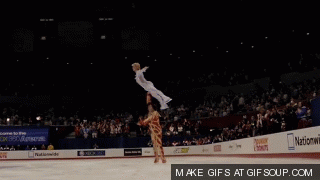
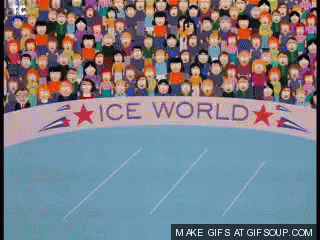
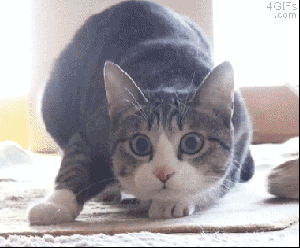
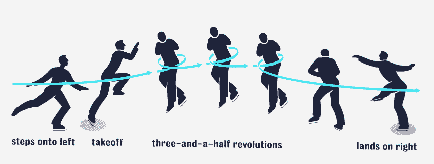

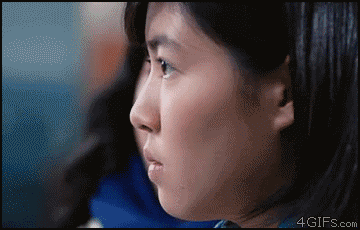
![[INTENSE INTRIGUE INTENSIFIES]](https://thefigureskatinglawyer.files.wordpress.com/2014/04/jhgl5k5.gif?w=480)
![[INTENSE RIGHT DIRECTION INTENSIFIES]](https://thefigureskatinglawyer.files.wordpress.com/2012/10/louistearingup1.gif?w=480)
